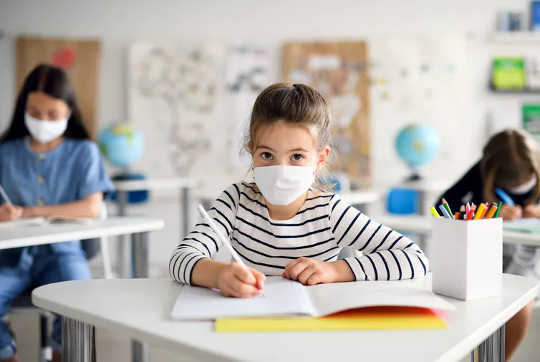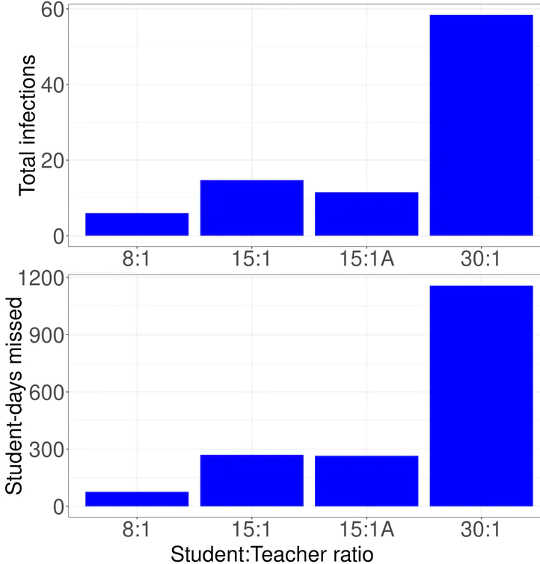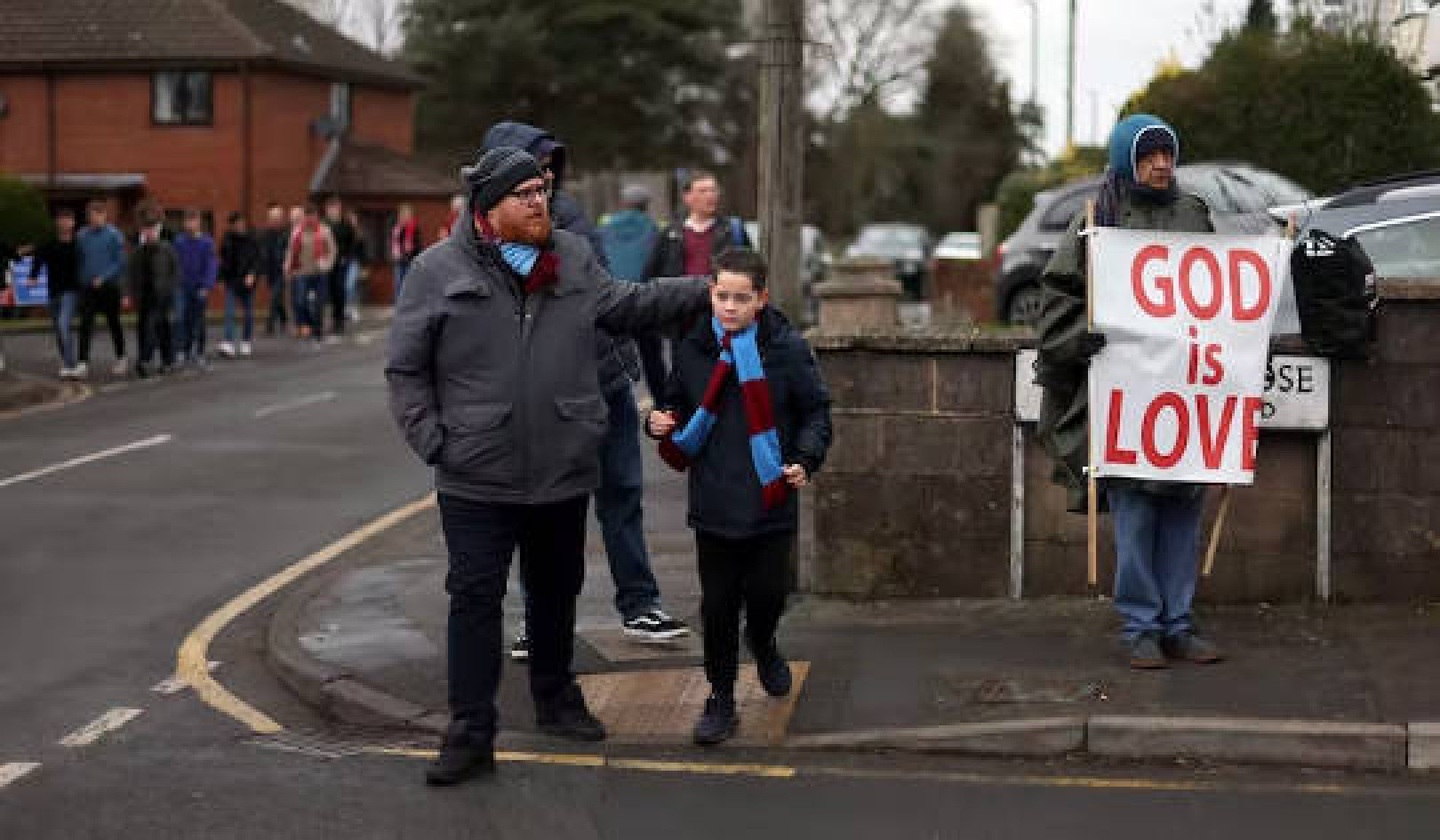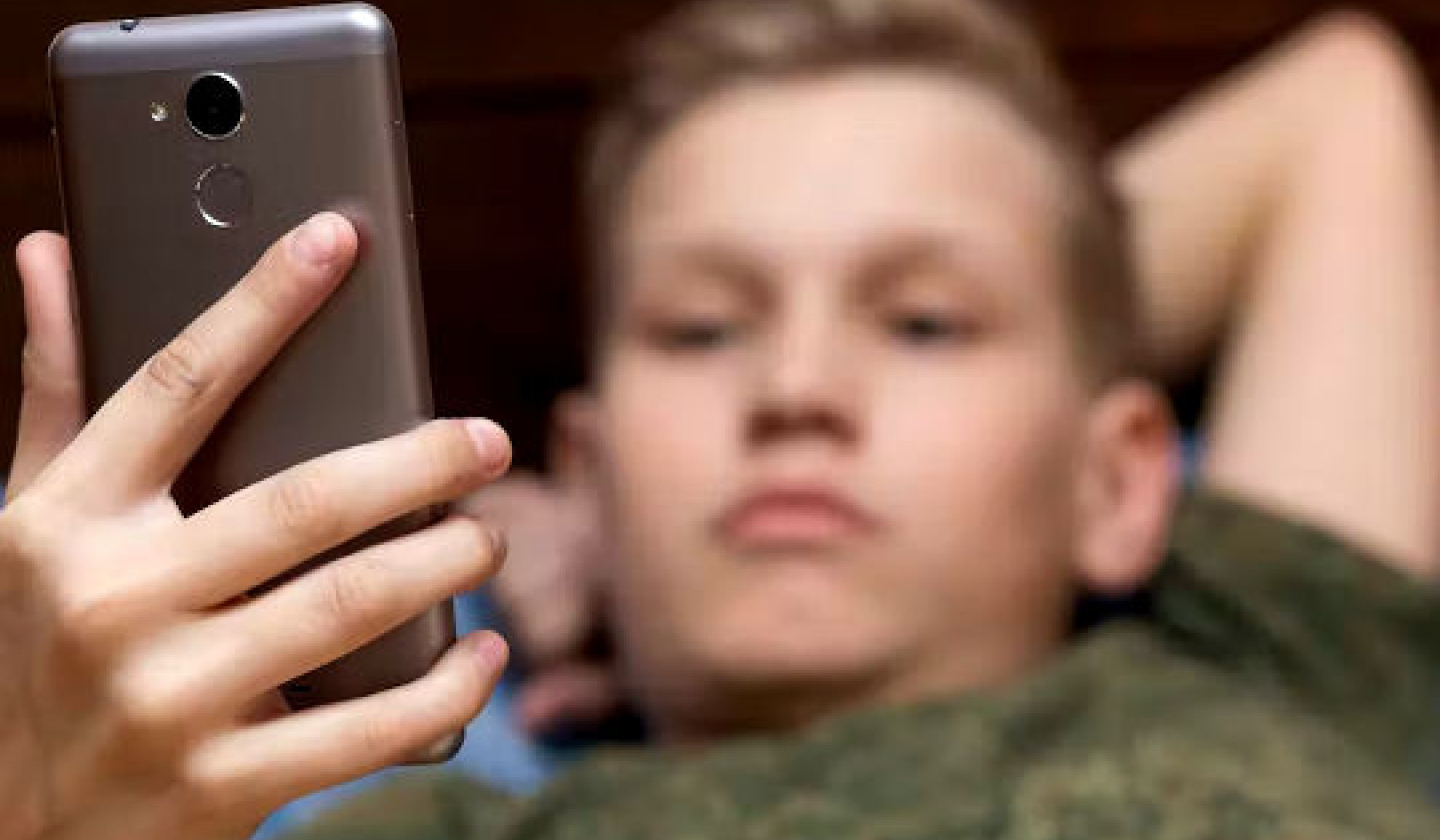
数学モデルは、クラスのサイズと構成を把握して、混乱や学校の閉鎖を最小限に抑えるのに役立ちます。 (シャッターストック)
北米での学校と保育所の再開計画を今秋に策定することは、パンデミックとCOVID-19に関する私たちの科学的知識の両方が急速に展開し続けているため、困難な作業でした。
For students attending in person, there are many questions to consider: How important is the cleaning and disinfecting of surfaces?直接出席する学生にとって、考慮すべき多くの質問があります:表面の洗浄と消毒はどれほど重要ですか? Which age of students should use masks, and when?マスクは何歳の生徒がいつ使うべきですか? What is the best approach to cohorting?コホーティングへの最善のアプローチは何ですか? How large should class sizes be?クラスのサイズはどのくらいにする必要がありますか?
Knowledge of how COVID-19 spreads has improved since the pandemic started, but as reopening plans were being developed, we recognized a need to investigate outbreak scenarios in schools and childcare centres.パンデミックが始まって以来、COVID-XNUMXの蔓延についての知識は向上しましたが、再開計画が策定されているため、学校や保育所での発生シナリオを調査する必要性を認識しました。 With our combined background in mathematical modelling, epidemiology, environmental sciences and childhood education, we tackled the question of class sizes.数理モデリング、疫学、環境科学、幼児教育のバックグラウンドを組み合わせて、クラスの規模の問題に取り組みました。
We developed a mathematical model of outbreaks in homes and classrooms.私たちは、家庭や教室での発生の数学的モデルを開発しました。 The model made a very surprising prediction: as class sizes go up, the negative impacts of COVID-19 go up exponentially faster.モデルは非常に驚くべき予測をしました。クラスのサイズが大きくなると、COVID-XNUMXの悪影響は指数関数的に速くなります。
きめ細かいアプローチ
私たちは 「個人ベース」モデル where distinct individuals (adults and children) are allowed to interact according to specified rules.個別の個人(大人と子供)が指定されたルールに従って対話することが許可されている場合。 This highly granular approach allows us to see the effects of social groupings and individual characteristics on personal outcomes like missed school days.この非常にきめ細かいアプローチにより、社会集団や個人の特性が、欠席した学校の日などの個人的な結果に与える影響を確認できます。
から得られた年齢と世帯規模の情報を使用する カナダ国勢調査データ、私たちは、XNUMX人以上の大人とXNUMX人以上の子供からなる幼児教育センターと関連する世帯で小さな人口を構築しました。 Our model is essentially a simulated virtual world of schools and homes.私たちのモデルは、本質的には学校や家庭の仮想世界をシミュレートしたものです。
 「A」は親を表し、「T」は教師を表し、円は子供を表し、数字は子供の教室の割り当てを表します。 (クリス・バウフ), 著者提供
「A」は親を表し、「T」は教師を表し、円は子供を表し、数字は子供の教室の割り当てを表します。 (クリス・バウフ), 著者提供
Children were allocated to classrooms randomly or by grouping siblings together.子供たちはランダムに、または兄弟をグループ化することによって教室に割り当てられました。 We considered childcare centre scenarios with student/educator ratios of 7:3, 8:2 and 15:2.学生と教育者の比率が8:1、15:1、30:1の保育所のシナリオを検討しました。 We also considered primary school scenarios with student/educator ratios of XNUMX:XNUMX, XNUMX:XNUMX and XNUMX:XNUMX.また、生徒と教育者の比率がXNUMX:XNUMX、XNUMX:XNUMX、XNUMX:XNUMXの小学校のシナリオも検討しました。 Students could attend class every day or alternate between in-person instruction one week and online learning the next week.生徒は毎日クラスに参加することも、XNUMX週間の対面指導と翌週のオンライン学習を交互に行うこともできます。
影響要因
COVID-19の症状のある症例が教室に現れた場合、それは19日間閉鎖されると想定しました。
しかし、クラスサイズがアウトブレイクに与える影響をモデル化するのは難しいです。
学校は最初の波の多くの間閉鎖されました and so — perhaps unsurprisingly — school-aged children did not account for a significant portion of cases during this period.そのため、おそらく当然のことながら、この期間中、学齢期の子供は症例のかなりの部分を占めていませんでした。 In addition, children are more likely to be asymptomatic and therefore not reported as having COVID-19.さらに、子供は無症候性である可能性が高いため、COVID-XNUMXに感染しているとは報告されていません。 A host of other factors could influence both the risk and size of outbreaks.他の多くの要因が、発生のリスクと規模の両方に影響を与える可能性があります。
So how can we predict what outbreaks in schools might look like, given that schools have not been open in Ontario since March 2020?では、XNUMX年XNUMX月以降オンタリオ州で学校が開校していないことを考えると、学校での発生がどのようになるかをどのように予測できるでしょうか。 Since we don't know all of the right input values to use, we took an approach of “使用する適切な入力値がすべてわかっているわけではないため、「不確実性分析、」科学的調査の礎石—すべてを知っているわけではないことを認めます。
This approach meant that we would change the model inputs and study how those affect the predictions.このアプローチは、モデル入力を変更し、それらが予測にどのように影響するかを調査することを意味しました。 For example, we distinguished between a “high transmission” assumption, where the virus can spread quickly, and a “low transmission” assumption, where the virus spread is being slowed by the use of masks, disinfection and physical distancing.たとえば、ウイルスが急速に広がる可能性がある「高感染」の仮定と、マスク、消毒、および物理的距離の使用によってウイルスの拡散が遅くなる「低感染」の仮定を区別しました。
トリプルワーミー
Across all of the permutations used in our uncertainty analysis, we were surprised to find that when class size doubled, the number of cases and student-days lost to closure more than doubled.不確実性分析で使用されたすべての順列にわたって、クラスのサイズがXNUMX倍になると、ケースの数と閉鎖に失われた学生の日数がXNUMX倍以上になることに驚きました。 Student-days are calculated by multiplying the number of closure days by the number of students affected, and with each class size doubling, they went up by factors of two to five.学生日数は、休校日数に影響を受けた学生数を掛けて計算され、各クラスのサイズがXNUMX倍になると、XNUMX倍からXNUMX倍になります。
 低伝達モデルのシナリオでの、COVID-19症例(上)および学生の授業日数の喪失(下)に対するクラスサイズの影響。 (クリス・バウフ), 著者提供
低伝達モデルのシナリオでの、COVID-19症例(上)および学生の授業日数の喪失(下)に対するクラスサイズの影響。 (クリス・バウフ), 著者提供
送信率を上げると、ケースの総数は変わりましたが、さまざまなクラスサイズのシナリオ間での相対的なケース数または終了までに失われた学生日数はそれほど変わりませんでした。大きなクラスは常に小さなクラスよりも比較的悪かったです。 XNUMXからXNUMXのほぼ同じ係数で。
これを「トリプルワーミー」と表現します。 First, when class sizes are larger, the chances are higher that one of the children will test positive.まず、クラスのサイズが大きいほど、子供のうちの2人がテストで陽性になる可能性が高くなります。 Second, when that child does test positive and the class is closed, closure of a larger class affects more children.第二に、その子供がテストで陽性であり、クラスが閉じられている場合、より大きなクラスの閉鎖はより多くの子供に影響を与えます。 Third, by the time the case is identified, the student might have been transmitting the virus for several days, or someone else in the class may have been asymptomatic and transmitting for many days.第三に、症例が特定されるまでに、生徒は数日間ウイルスを感染させていたか、クラスの他の誰かが無症候性で何日も感染していた可能性があります。 This third point is crucial — it is increasingly clear that SARS-CoV-XNUMX can be spread by aerosol particles.このXNUMX番目のポイントは非常に重要です—SARS-CoV-XNUMXがエアロゾル粒子によって広がる可能性があることがますます明らかになっています。
その他の結果
The worst scenario, by a wide margin, was the 30:1 ratio in the primary school setting.最悪のシナリオは、かなりの差で、小学校の設定での15:1の比率でした。 Switching to a 15:1 ratio with alternating weekly cohorts (XNUMX:XNUMXA) reduced the number of cases and student-days lost to closure by a factor of around four.毎週のコホート(XNUMX:XNUMXA)を交互に使用してXNUMX:XNUMXの比率に切り替えると、症例数が減少し、学生の休業日数が約XNUMX分のXNUMXに減少しました。 And even though higher student/educator ratios allow more students to get in-person instruction, they also cause more disruptions due to more frequent need to close classrooms when a case is identified.また、生徒と教育者の比率が高いほど、より多くの生徒が直接指導を受けることができますが、ケースが特定されたときに教室を閉じる必要性が高くなるため、混乱がさらに発生します。
In addition, there are likely to be significant psychological, social and mental health consequences for parents and children when schools and childcare centres close.さらに、学校や保育所が閉鎖されると、親や子供に重大な心理的、社会的、精神的健康への影響が生じる可能性があります。 And since outbreaks can happen at any time, working parents may need to be pulled from their work with little or no advance notice.また、発生はいつでも発生する可能性があるため、働く親は、事前の通知をほとんどまたはまったく受けずに、仕事から引き離される必要がある場合があります。
今後
Schools and childcare centres have already reopened.学校や保育所はすでに再開しています。 Some districts have been allowed to go with a preferred model that permits smaller class sizes, and this is a step in the right direction.一部の地区では、クラスの人数を減らすことができる優先モデルを採用することが許可されており、これは正しい方向への第一歩です。
There are also many examples of how school districts can reduce class size at minimal cost.学区が最小限のコストでクラスの人数を減らす方法の例もたくさんあります。 For instance, kindergarten classes with two teachers could split into two groups, one of which uses the library, gym or spends more time outdoors in activities.たとえば、XNUMX人の教師がいる幼稚園のクラスはXNUMXつのグループに分けられ、そのうちのXNUMXつは図書館やジムを使用するか、屋外での活動により多くの時間を費やします。
If widespread school closure occurs again this fall, we suggest that re-reopening plans pay close attention to the aspect of class size.今年の秋に学校の閉鎖が再び発生した場合は、再開計画にクラスの規模の側面に細心の注意を払うことをお勧めします。 While the risk of outbreaks will never be zero even with small classes, it would be prudent for class sizes to be lower, so these disruptions affect the fewest number of children and families possible.少人数のクラスでも発生のリスクがゼロになることはありませんが、クラスのサイズを小さくするのが賢明であるため、これらの混乱は可能な限り少ない数の子供と家族に影響を及ぼします。 In the meantime, for parents and caregivers, the best thing to do isそれまでの間、保護者や介護者にとって最善の方法は 正直でオープンな会話をする 仕事や育児の手配など、家族の閉鎖がどのように見えるかについて。
数学は、学校や教室の閉鎖がこの秋多くの学区にとって現実になることを示しています。![]()
著者について
クリス・バウフ、応用数学教授、 ウォータールー大学; Brendon Phillips, Ph.D.ブレンドンフィリップス博士student, Applied Mathematics,学生、応用数学、 ウォータールー大学; Dillon Thomas Browne, Assistant Professor, Psychology,ディロン・トーマス・ブラウン、心理学助教授、 ウォータールー大学、およびグローバルエコロジカルチェンジ&サステナビリティラボラトリーの教授兼ディレクターであるマドゥールアナンド、 グエルフ大学
この記事はから再公開されます 会話 クリエイティブコモンズライセンスの下で 読む 原著.

関連書籍:
Amazon.com で現在ベストセラーになっている子育てに関するノンフィクションの本 5 冊を次に示します。全頭脳の子供:あなたの子供の発達する心を育てる12の革命的戦略
ダニエル・J・シーゲル、ティナ・ペイン・ブライソン
この本は、神経科学からの洞察を使用して、子供たちが感情的知性、自己調整、および回復力を発達させるのを助けるための親のための実用的な戦略を提供します.
ドラマではない規律:カオスを静め、お子様の成長する心を育むための全脳的な方法
ダニエル・J・シーゲル、ティナ・ペイン・ブライソン
The Whole-Brain Child の著者は、感情の調整、問題解決、共感を促進する方法で親が子供を訓練するためのガイダンスを提供しています。
子供たちが聞くように話す方法&子供たちが話すように聞く
Adele FaberおよびElaine Mazlish
この古典的な本は、親が子供とつながり、協力と尊敬を育むための実用的なコミュニケーション技術を提供します。
モンテッソーリ幼児: 好奇心旺盛で責任感のある人間に育てるための親のためのガイド
シモーネ・デイビス
このガイドでは、保護者が家庭でモンテッソーリの原則を実践し、幼児の自然な好奇心、自立心、学習への愛情を育むための洞察と戦略を提供します。
平和な親、幸せな子供たち: 怒鳴るのをやめてつながりを始める方法
ローラ・マーカム博士
この本は、親が子供たちとのつながり、共感、協力を育むために考え方やコミュニケーションのスタイルを変えるための実践的なガイダンスを提供します。





















